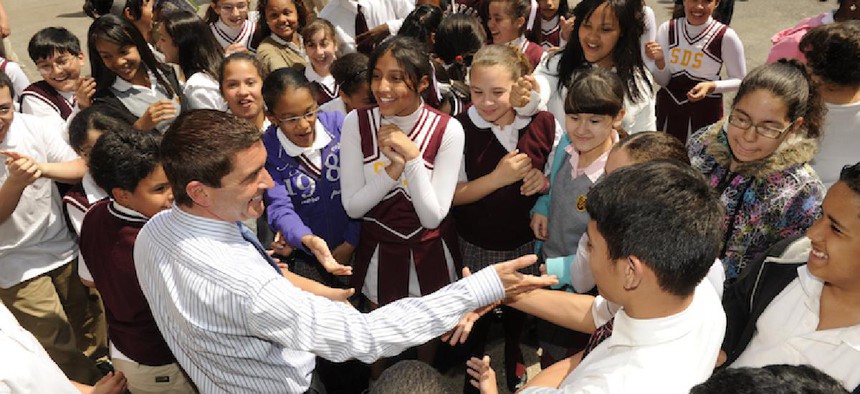When school lets out at 3 p.m., many young students in our state are left with nothing productive to do and so they might spend hours on vacuous or inappropriate activities before anyone comes home.
This idle time is a result of a generational shift where increasingly both parents are working full-time, but the way we choose to occupy students’ minds during these vital hours can change their trajectory in school and life.
Believe it or not, 20 percent of our 2.67 million students enrolled in statewide public schools remain alone after school hours. Only 632,000 attend vital after-school programs.
That’s simply because of a lack of availability. A study conducted by the Afterschool Alliance found that over 1 million children would fill afterschool seats if schools offered programs.
Between 3 and 6 p.m. many children in elementary and middle school who are not signed up for afterschool programs wind up experimenting with drugs or participating in criminal activity. Comparatively, students who spend the same hours in school, where they work on educational and enrichment activities, have increased test scores and retain important workforce skills.
So why isn’t every child enrolled? It’s a financial calculation that needs to change.
Over the years New York state has decreased funding for these crucial programs. In Fiscal Year 2007 through 2008, $190 million was allocated to afterschool programs, compared to current levels of only $143.5 million for afterschool seats, including $84.5 million from the US Department of Education for the 21st Century Community Learning Centers program.
With a mere $59 million state investment, localities must dip into School Foundation Aid to fund these programs, making it even more difficult to open up seats.
We must invest a total $550 million in afterschool programs to ensure that more students can reach their academic potential. With this investment, 167,000 more students across our state would be able to enroll in an afterschool program.
Robust after school programs help develop stellar students. Look at the performance evaluation of students enrolled in 21st Century Community Learning Center programs. Not only did teachers report that homework and class participation increased among attendees, but Research Works, Inc. found that 90 percent of the children enrolled met or surpassed their English and math standardized test scores.
The benefits of afterschool programs are many. Parents with children enrolled in afterschool programs see social and emotional growth in their children and say that kids learn workforce skills in this environment. Children also participate in physical activities, learn about nutrition and are less likely to be obese in a state where the Department of Health considers 33 percent of elementary school students overweight or obese.
Taxpayers benefit too. For a $351 million investment, over time taxpayers will save $1 billion in remedial programs for students and $2 billion in crime reduction benefits.
We must remember that aside from dollars and cents, these programs are critically important for children who are left alone. When that school bell rings we have a responsibility to continue educating and enriching our youngest New Yorkers. If we don’t, children will continue to waste these hours alone.
Jeff Klein is a state Senator representing the Bronx and Westchester. Kelly Malone Sturgis serves as the executive director for AfterSchool Works! NY: the New York State Afterschool Network.


